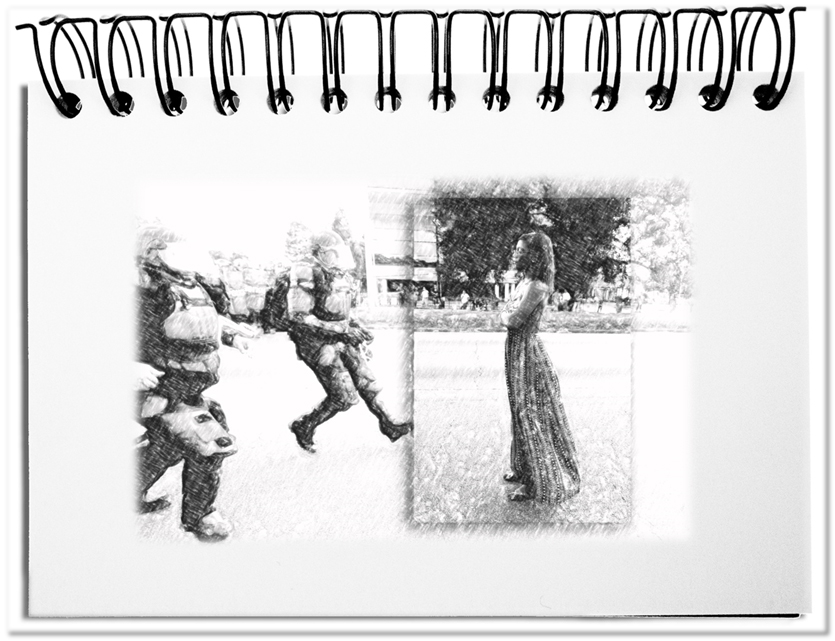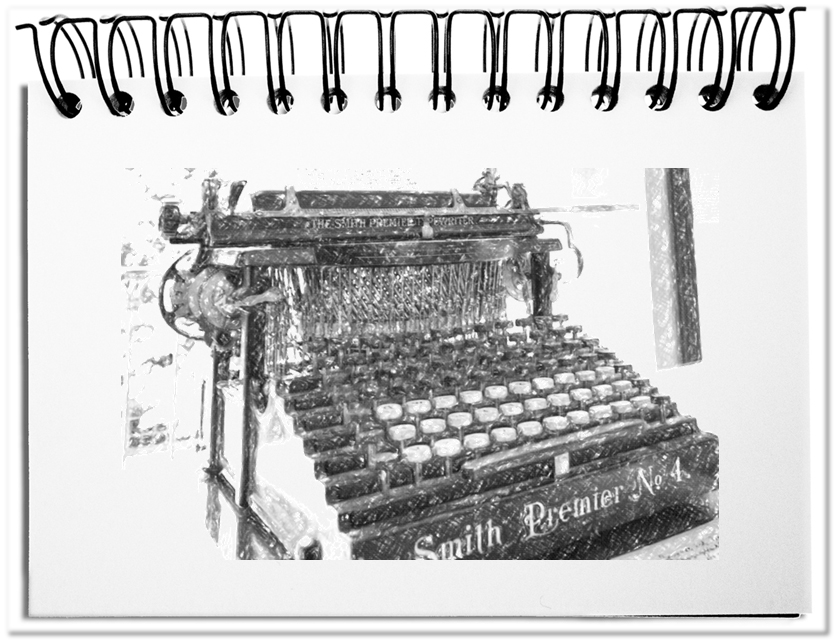The countless parallel worlds made possible by digitalization and networking construe for themselves their own realities, which are readily accepted by the target audience. When observing, the different groups look at the same situation from different, often opposing perspectives. A photo provides a factual reflection of the reality and we believe that what we see is just like it seems. Even as it is obvious that each shot is the result of the selection of the intended image detail. Who would suspect that this woman standing alone in the portrait format is a protester? If the image detail becomes slightly expanded, a new situation unveils. The same happens when we exchange contents. What is said contains above all a plethora of unsaid. That makes everything that can be different, actually different – for every observer.
Since today everybody can access the Internet, either with a post in a discussion forum or a blog article or in the own website, all points of view find their way into the public. And the following applies: Nothing works anymore, without someone finding something negative in the acts or in the statements of others and reinterprets them accordingly.
- Right does not exist anymore
As soon as a national monument is in flames, it creates countless options for action that are neither necessary nor impossible. This contingency is taken up by individuals and exploited for all imaginable reasons. If you immediately take care of repairing the damage caused by the fire, the questions arise as to why you don’t take care of other burning issues. If people remain inactive, their inactivity is lamented. This particular form of double bind that leads to the fact that you are always wrong engaging in something, will eliminate the willingness to do something in the long run.
We have to get out of these opportunistic accusations and once again learn to value the achievements of others as what they are, an impacting act. - Being against something always works
In every right action there are nowadays a lot of arguments against it. If you do something, then the question comes up, why not something different or more different. If the fire damages are repaired with tax money, urgently needed tax money is wasted. If people donate their money voluntarily, then somebody gets up and makes them feel guilty, because they don’t get involved in other social projects – although we don’t necessarily know. Always insinuating the bad to others oversees the fact that we are judged according to the same rules. No matter which side we take, there will quickly be contemporaries who criticize you for this standpoint.
The way out of this vicious circle requires independent personalities, who feel more attached to their ethical values than to any line whip. - Conceal insubstantiality with opposition
Populists are specialized in making themselves heard by always criticizing the activities of their opponents. To simulate strength through import duties and to insult Europe, which is then doing the same, which leads to endangering national jobs at Harley-Davidson. There is no indication for own ideas. And it doesn’t need to be, because the pro-active supply the stuff that the freeloaders exploit for their interests.
Somehow we have to be able to free ourselves again from the manipulations of opportunistic movements before everything gets worse and the mental walls become dangerous. - Attack is the best defense
The connectivity of the expressions leads to a longer back and forth of the arguments. If you are accused of behaving undemocratically, then the best defense is to point out that you yourself are being treated undemocratically. As you can see in the fact that certain parties, who are not elected in Bundestag committees call it as undemocratic. The political discourse is degenerating. Politicians unwind their memorized messages, regardless the course of the conversation. And journalists can obviously no longer moderate a conversation.
Whilst every public discussion is only an election campaign speech for the own target group, we should refrain from these discussions. The protagonists must again speak to each other, instead to their voters. - All only see, what they can see
It is very difficult to look for reality in the news, because they are always a construction of the observer, which cannot be objectified. You can think what you like about Trump, but his press secretary Kellyanne Conway has found the right formulation – Alternative Facts. The radical constructivists have already put it in a nutshell: “The world, as we perceive it, is our own invention.”
The task now is to find a way to put the different views back into the position to exchange ideas.
Bottom line: The general availability of data creates a new universe of possibilities, all of which are worth living for themselves or not – depending on the angle of view. What gets more and more lost is to meet on a common denominator in order to be able to persist together. If nothing can be the way it is, but is always a target for complaints, then self-reinforcing conflicts arise which become difficult to resolve. When right no longer exists, someone is always against it, insubstantiality is concealed with opposition, attack is the best defense and the last resort is doubting the truth, then all efforts for something lose their momentum. Then conversations become monologues with third parties, instead of dialogues with the counterpart. We must get out of this vicious circle that leads to an increasingly aggressive confrontation with dissenters. Active listening and an anticipatory appreciation relax the exchange of thoughts and improve the understanding of the other opinion. And the following applies: What can be different, is actually different.


